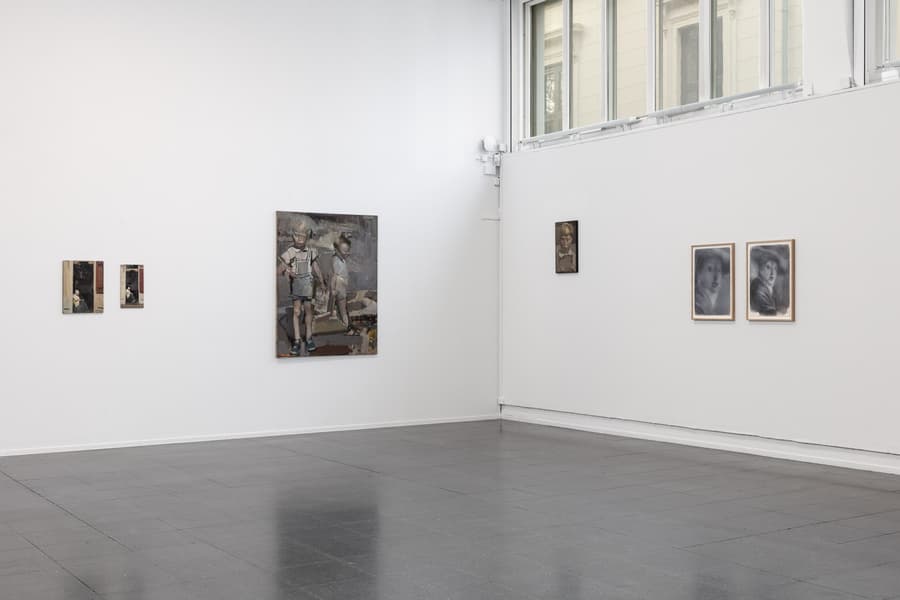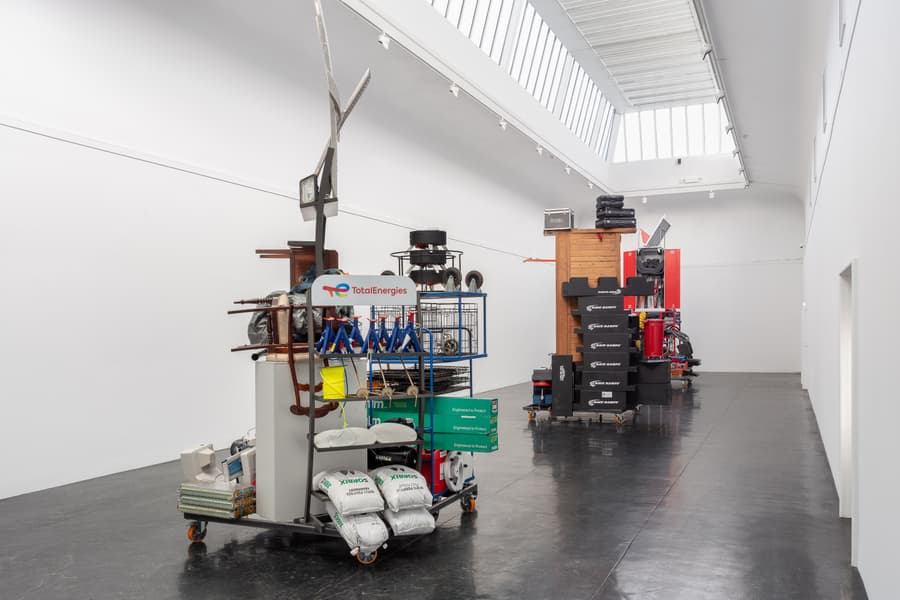Fadlabi
05.06.20 – 23.08.20
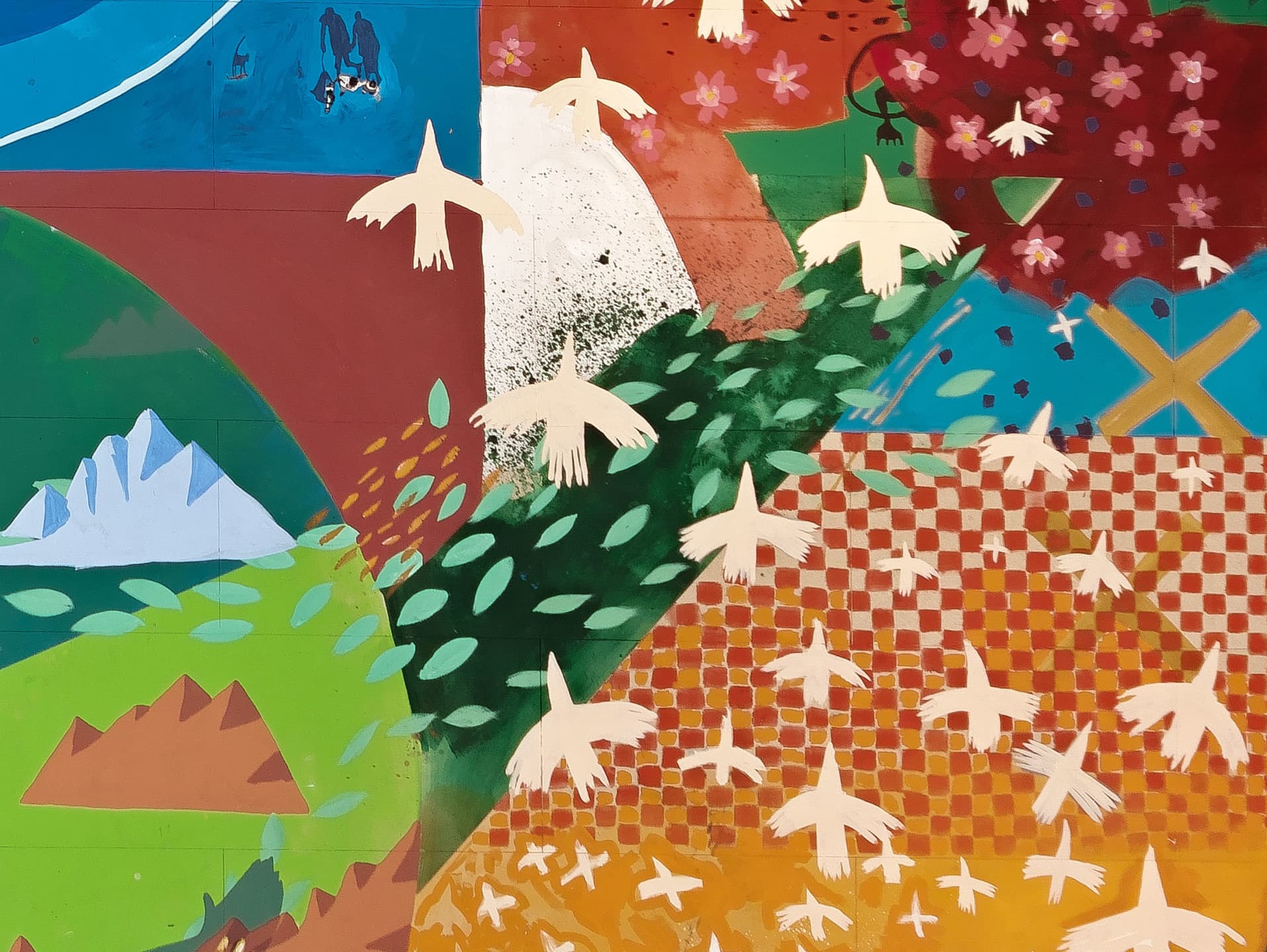
The 90th anniversary exhibition presents a timeline of Kunstnernes Hus' exhibition history in dialogue with a brand new monumental work by Norwegian-Sudanese artist Fadlabi. As an artist-owned institution, the desire was to let an artist cast his personal look on our institution. The work is inspired by the history of the institution and by Per Krohg's iconic ceiling painting in the staircase.
In addition, the exhibition will present a comprehensive video material from NRK's archive. The film material reflects on how state media has covered Kunstnernes Hus over the decades. The film clips, many made digital for the first time on this occasion, show vivid pictures of some of the most renowned exhibitions - from the Etruscan Exhibition to Paul Klee, Barbara Hepworth, Andy Warhol, Siri Aurdal and Pushwagner. This exhibition is curated by Gilda Axelroud, Ida Kierulf, Lars Mørch Finborud and Anne Hilde Neset.


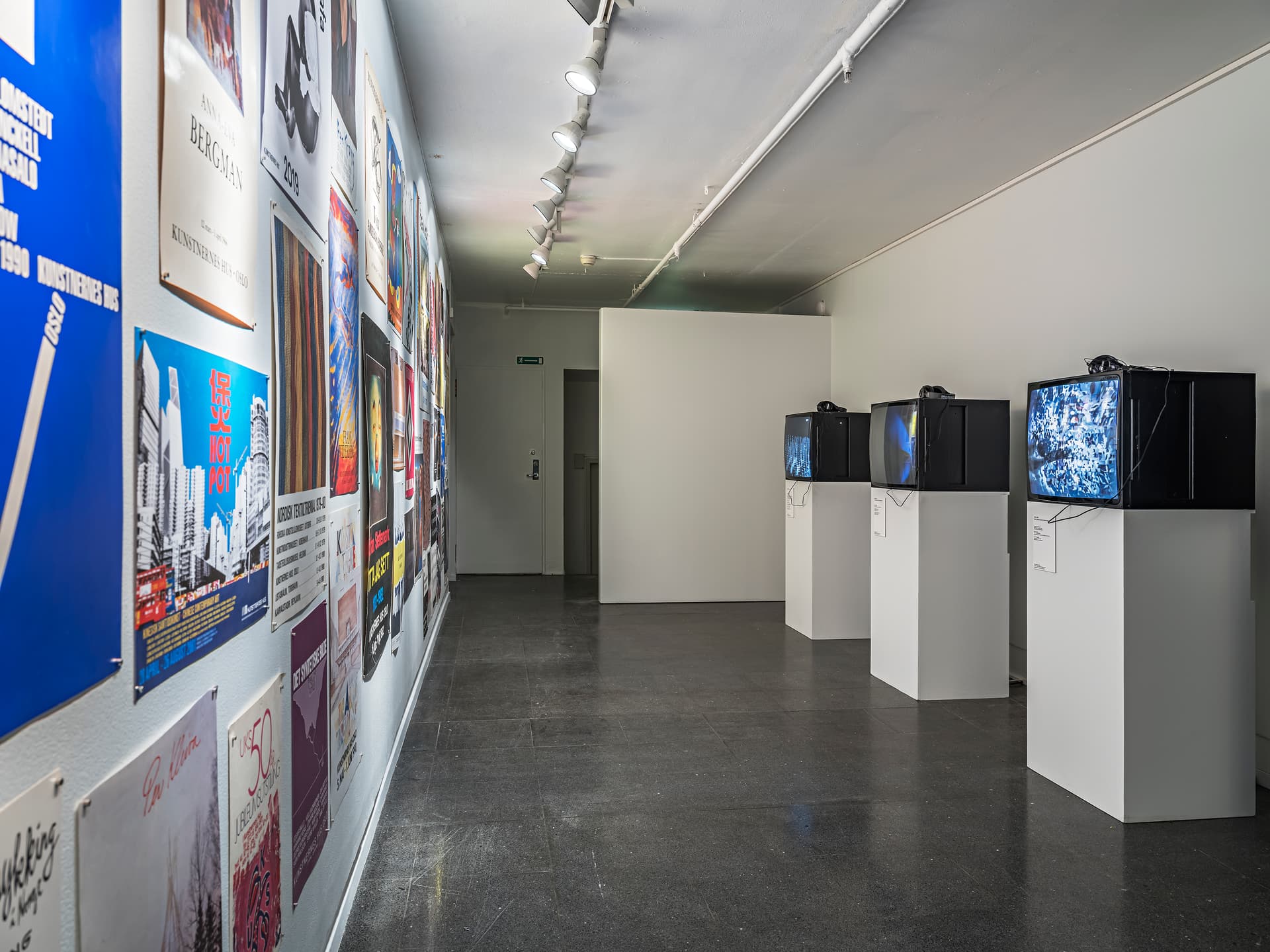
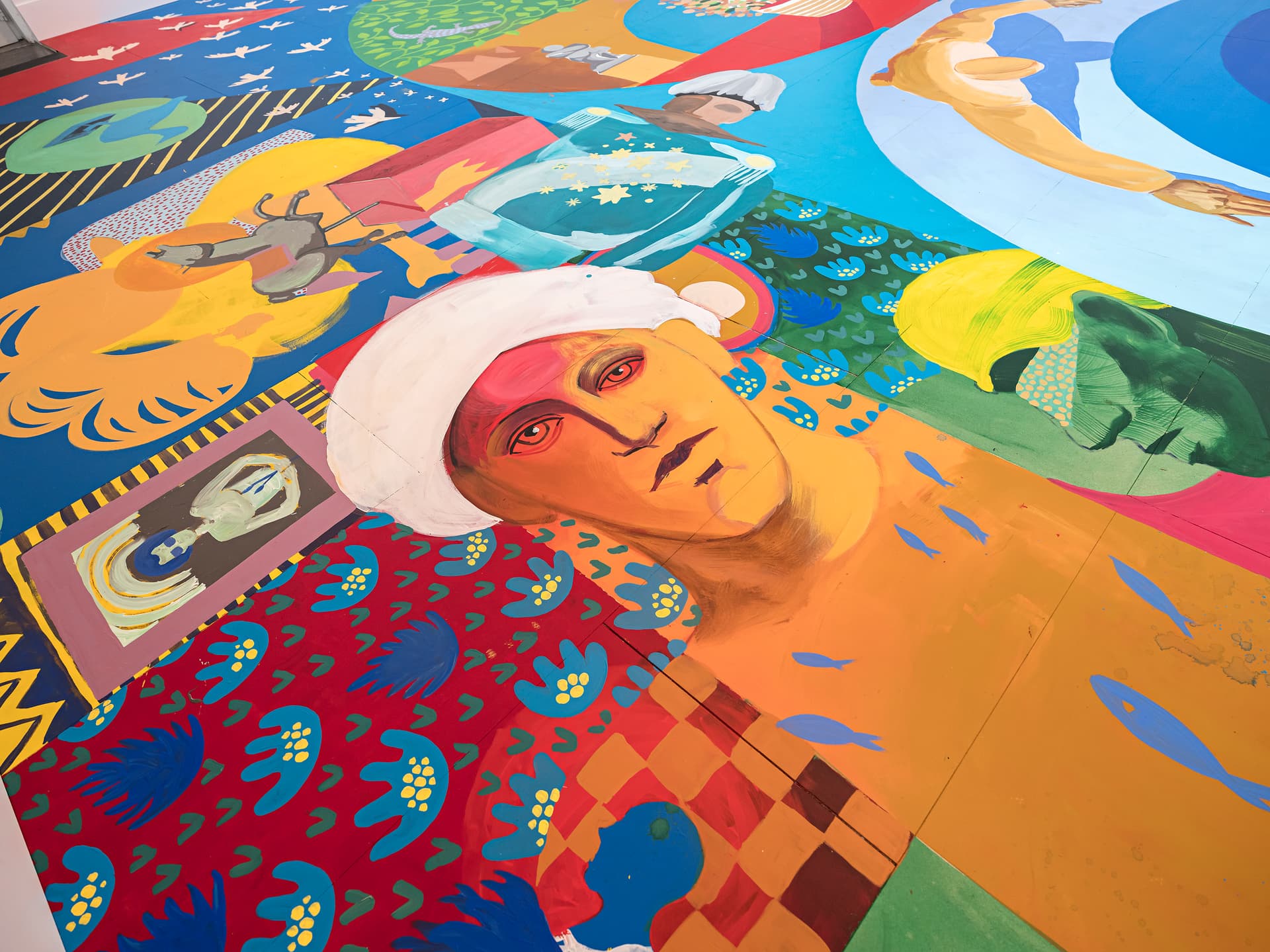
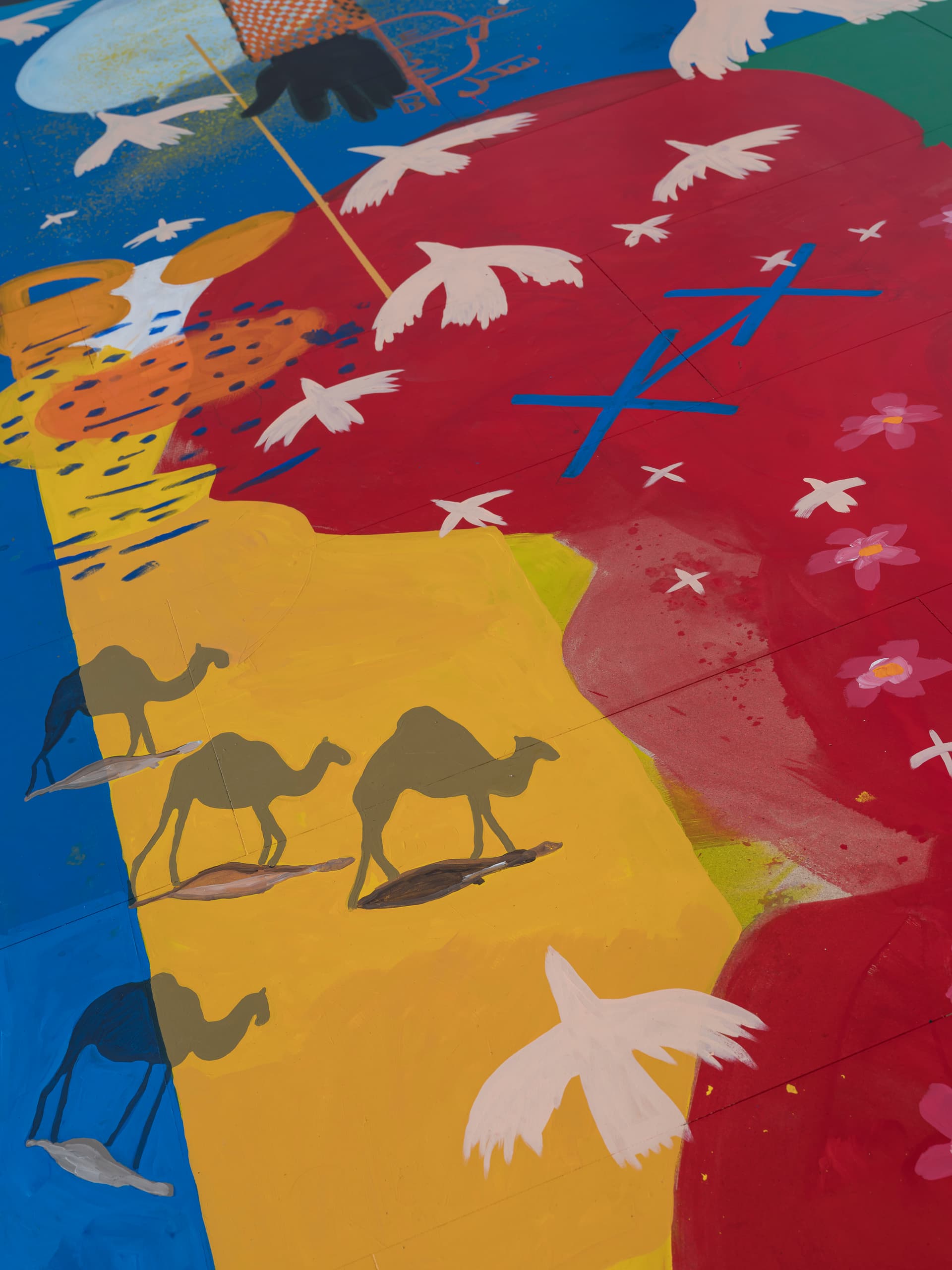

Photo: Vegard Kleven
Anecdotes from our history
Download the exhibition reader with anecdotes from Kunstnernes Hus' history (in Norwegian):
About the exhibition
One might say the story began in 1929, when architects Gudolf Blakstad and Herman Munthe-Kaas won the competition for what would become Kunstnernes Hus with their model entitled Felix. One might even go further back, when the first Autumn Exhibition (Høstutstillingen) was held in Norway in 1882. This historic salon exhibition, where both accomplished and hopeful artists from all over Norway would send in works juried by a committee of artists, was one of the main reason to fundraise an “artist house.” The summer of 1932 might also be the start of the story, when Per Krohg painted the ceiling of the staircase, which today is Fadlabi’s main inspiration for The Onset of Vertigo. In that light, one might even start 5 000 km away, with Fadlabi’s own story; An upbringing in the outskirts of Khartoum in Sudan and a youth nourished by the colourful visuals of painted barbershop charts from which he learnt that painting “captures reality beyond that which an eye can see.”
In Krohg’s ceiling mural entitled An Artist’s Thorny Path to the Heights, a male figure is depicted opening three different doors, representing three stages of his artistic path. The first stage is nature and the study of anatomy. The second is the encounter of illusion, lie and truth. The third one is the tunnel of wisdom; the artist reaches the light on the other side of the tunnel only to realize that the circular journey is endless. By representing the ancient symbol of a snake biting his tail, Krohg seems to incite artists to start their journey all over again. Fast forward 88 years, Fadlabi embarks on his own dialogue with Per Krohg and Kunstnernes Hus’ history, calling his new work “not just a painting, but a time machine.”
Painted in acrylic paint and coated with a thick layer of lacquer that allows each viewer to step onto – and into – the painting, the subject matter of The Onset of Vertigo is willfully non-specific. The trained art historical eye might catch details from events and artworks from Kunstnernes Hus’ exhibition history, but Fadlabi’s main attempt is to grasp the implications of an artist’s struggle as depicted by Krohg. Where Krohg sends the artist on a vertical journey to the heights, Fadlabi grounds him on a horizontal reality. Where Krohg seeks light, Fadlabi seeks answers. Where Krohg finds a circular path, Fadlabi finds a rhizomic one: a network of stories, deceptions, pain, and fulfillment: “it’s a painting about the artist being as shitty as everyone else and it’s a painting about Kunstnernes Hus. A salute to the house where the artist can tell such a story and feel he is celebrated.”
The viewers are invited to step into Fadlabi’s world and, at the same time, follow the chronological path of the Kunstnernes Hus’ exhaustive exhibition history. A wall timeline frames the floor piece whilst video presentations from the National Broadcasting archives are placed outside the room in order to offer a historical context prior and after having dived into Fadlabi’s painting. The curated video material aims to show Kunstnernes Hus' reception history and how its radical artistic programme has been mediated to the broader public. Many digitalized for the very first time, the excerpts present moving images of some of the most prominent exhibitions such as Paul Klee, Barbara Hepworth, Hannah Ryggen, Andy Warhol, Cindy Sherman, Siri Aurdal and Pushwagner, only to name a few.
About the artist
Fadlabi (b. 1975) was born and raised in Sudan. Fadlabi is one of Oslo's most prominent, younger painters. He has been the founder of Khartoum Art Center, an artist-run social arena and exhibition venue. In his works Fadlabi combines everything from Ethiopian church icons and murals in African barbershops to Afrofuturism and pop art. His projects often challenge preconceptions of ethnicity and ask who has the defining power over history. He has studied political science and art at the University of Khartoum and art at the Oslo Art Academy.
Book, symphony and flags
As part of the anniversary programme in 2020, Norwegian composer Øyvind Torvund’s specially composed symphony will be performed in November, a flag project with Norwegian artist Sverre Gullesen will be presented in August, and a 400 pages publication about Kunstnernes Hus’ graphic design history edited by artist Bjørn Kowalski-Hansen is available in our bookshop. This book presents an array of designs, a handful of anecdotes, as well as a comprehensive overview of all past exhibitions.
Guided tours
These are the dates for our guided tours (open to everyone):
Sunday, June 7, 14:00-14:45
Sunday, June 14, 14:00-14:45
Sunday, June 21, 14:00-14:45
Sunday, June 28, 14:00-14:45
Sunday, August 2, 14:00-14:45
Sunday, August 9, 14:00-14:45
Sunday, August 16, 14:00-14:45
Sunday, August 23, 14:00-14:45
